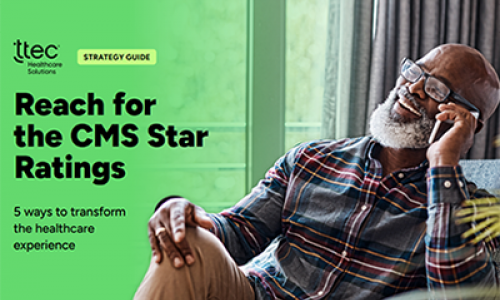In healthcare today, organizations must transform at a faster pace and on a wider scale. Crowdsourcing is helping them tap into customer ideas to do it.
For consumers across the country, healthcare truly hits home, and in the public eye, healthcare reform continues to gain momentum. But, as consumers struggle to afford the necessary care, and as government officials search for ways to satisfy voters, healthcare reform has caused the industry high anxiety over the past few years.
With the passage of the Affordable Care Act, a new floodgate of change has opened, and it is putting pressure on organizations to improve clinical operations efficiency, enhance care quality, and adopt disruptive new business models. Most organizations continue to be consumed with these transformation demands, which are a direct result of the new law. But that’s not the only challenge. Despite decades of nibbling at the edges of patient and consumer centricity, healthcare organizations are now faced with the daunting task of looking at everything they do from the consumer’s vantage point. As they gain this new perspective, even more things need to change. Processes designed for a world of specialization, cultures created during a different era, and technologies which continue to lag behind nearly every other industry all need to be addressed simultaneously.
Most healthcare organizations faced with these overwhelming changes find they cannot address them alone, simply by leveraging their internal capabilities. In fact, early efforts to do so failed. Now organizations recognize that transformation at the pace and scale necessary in today’s world requires best practices, tools, and methods that have been tested and proven in other organizations. As a result, they are increasingly looking for innovative ideas from outside their organizations, and crowdsourcing is one approach for capturing and validating ideas from their customers. Additionally, engaging their customers develops stronger relationships which otherwise might take years, if not decades, to establish. Organizations from across the healthcare landscape (including pharma, providers, and payers) are engaging their customers in dialogue to capture feedback, generate measures of satisfaction, and participate in breakthrough innovations.
Crowdsourcing is not a new idea in healthcare. Pharmaceutical companies began crowdsourcing with scientists and researchers to uncover new therapies over a decade ago. More recently, everyone from medical device companies to hospitals are using crowdsourcing to solve complex problems, design or redesign “channels of care” which extend outside the enterprise, and build communities focused on specific chronic illnesses.
But crowdsourcing is not a panacea. As with anything new, there are obstacles which need to be overcome. Participation in crowdsourced problem solving requires dedicated platforms and community managers. Successful crowdsourcing initiatives require a sense of community and purpose, the ability to see tangible results, and experiences that bring value to the participants and not just the sponsoring organization.
Today’s industry challenges may spell difficulty for all, but they also provide opportunity for those organizations willing to step outside their own organizations to find new ideas. For those early adopters, they will tap into a tremendous resource for solving problems.
Crowdsourcing for Solutions to the Healthcare Quandary


April 2, 2013
by Ron Wince,
General Manager, TTEC Digital
Digital Transformation Consulting, Back Office Support
General Manager, TTEC Digital
Digital Transformation Consulting, Back Office Support





